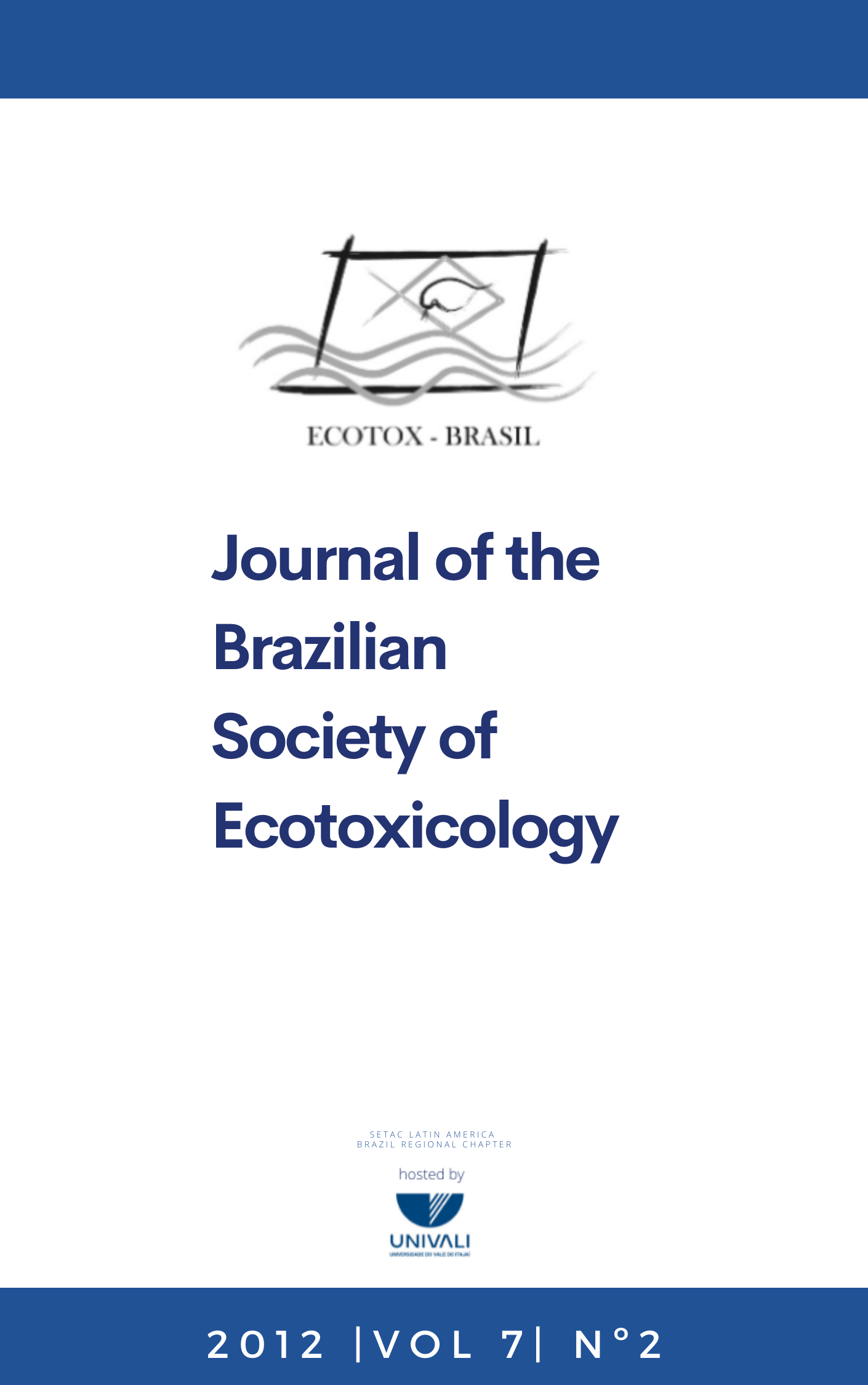Localization of inorganic and organic mercury in the liver and kidney of Cyprinus carpio by autometallography
Abstract
Mercury bioaccumulation in different tissues largely depends upon metal chemical form and has important implications on tissue-specific toxicity. Then, simple tools for mercury tissue localization are very useful for understanding the toxicity of mercurial compounds in fishes. In the present study, inorganic and organic mercury distribution was investigated in carp Cyprinus carpio, utilizing autometallography. Juvenile C. carpio were exposed through force-feeding with mercury contaminated pelleted food at doses of 0.5 μg g-1 of Hg+2 or MeHg twice at 15 days interval, and killed 15 days after the second exposure for sampling. Organic mercury was observed inside hepatocytes and in biliary ducts of liver, whereas inorganic form of mercury was observed only in biliary ducts. In the kidney, mercury was observed mainly in renal tubules, with the predominance of inorganic over organic mercury. The present study demonstrated that autometallography is a useful tool for the tissue localization of two mercurial compounds in the liver and kidney of C. carpio after trophic exposure.
Keywords: Autometallography, mercury, liver, kidney, Cyprinus carpio.
Downloads
Downloads
How to Cite
Issue
Section
License
Copyright © 2006 ECOTOX-Brasil
Copyright notice: It is a condition for publication that manuscripts submitted to this journal have not yet been published and will not be simultaneously submitted or published elsewhere. By submitting a manuscript, the authors agree that copyright for their article is transferred to the Sociedade Brasileira de Ecotoxicologia (ECOTOX-Brasil) if and when the article is accepted for publication. The copyright covers the exclusive rights to reproduce and distribute articles, including reprints, photographic reproductions or any other reproduction of a similar nature, including translations. No part of this publication may be reproduced, stored in a retrieval system or transmitted in any form or by any means, electronic, mechanical, photocopying, recording or otherwise, without permission of the publisher.
Notice: While every effort is made by the EEC, editors and editorial board to see that no inaccurate or misleading data, opinions or statements appear in this journal, they wish to make it clear that the contents of the articles and advertisements published herein are the sole responsibility of the contributors or advertisers concerned. Accordingly, the EEC, the editorial board and editors and their respective employees, officers and agents accept no responsibility or liability whatsoever for the consequences of any inaccurate or misleading data, opinion or statement.




